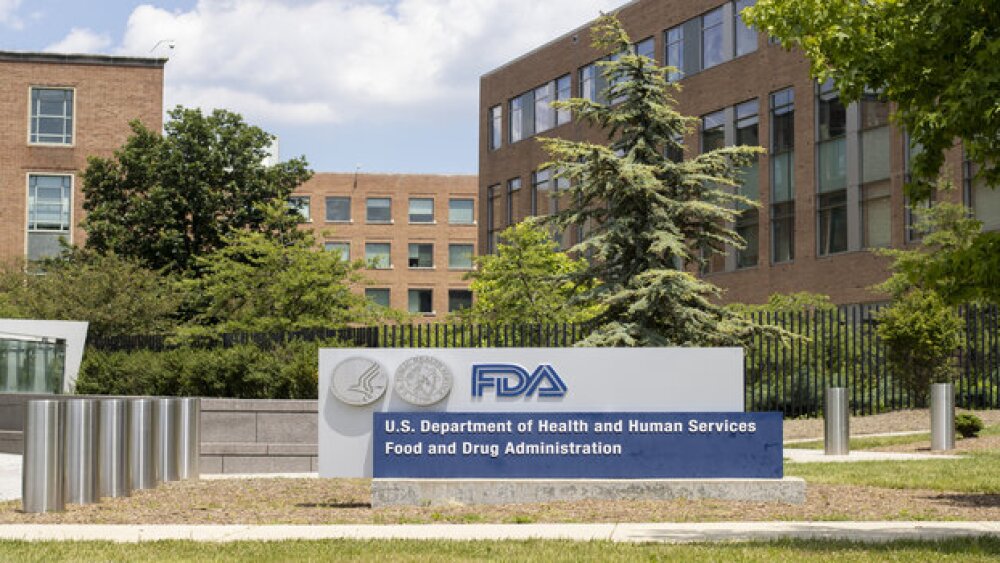The FDA is looking at revising the current vaccine strategy and emphasizing that individuals need to consider their own risk tolerance. For that and more, continue reading.
Although the COVID-19 pandemic is still raging in parts of the world, it appears to be edging toward an endemic phase. As such, the U.S. Food and Drug Administration and other regulators are looking at revising the current vaccine strategy and emphasizing that individuals need to start considering their own risk tolerance in their personal behaviors. For that and more, continue reading.
Frequent COVID-19 Boosters Not Sustainable
Now that, in the U.S. at least, a fourth shot of the COVID-19 vaccines from Moderna and Pfizer-BioNTech is being recommended for some parts of the population, immunologists, vaccine experts and public health officials are starting to caution that this is not sustainable.
“We simply can’t be boosting people as frequently as we are,” stated the FDA’s Dr. Peter Marks, M.D., Ph.D., speaking to the agency’s Vaccines and Related Biological Products Advisory Committee. Marks is the director of the FDA’s Center for Biologics Evaluation and Research (CBER).
Part of this talk was to describe a way forward to include vaccines that target more than one strain of SARS-CoV-2 and highlight how the public may have to accept vaccines that decrease severe disease and death but don’t necessarily prevent every infection. The target is having it ready by the fall. The FDA meeting was to discuss what those approaches and vaccines should look like, with all agreeing that repeatedly giving the same “monovalent” vaccine against the original Wuhan strain has diminishing returns.
Dr. Peter Chin-Hong, a U.C. San Francisco infectious disease expert, echoed the idea, saying, “If we settle down to one shot per year that combines COVID and flu, I think that will be sustainable. Nobody will want to get a vaccine every six months. So we have to change the strategy.”
4TEEN4 Pharma Biomarker to be Used in Trial for Severe COVID-19
Germany’s 4TEEN4 pharmaceuticals GmbH announced that its biomarker DPP3 will be leveraged in a biomarker-guided study in severe COVID-19. The trial will use two biomarkers, bioactive adrenomedullin (bio-ADM) and dipeptidyl peptidase 3 (DPP3) to stratify patients in a study of adrecizumab. Patients with severe COVID-19 produce several different biomarkers associated with different clinical pathways. One is loss of endothelial function associated with worsening lung function. Another is the uncontrolled release of DPP3 from cell injury causing loss of organ function and “hemodynamic instability.” Bio-ADM is associated with loss of endothelial function and DPP3 is associated with loss of heart function. Adrecizumab is designed to treat endothelial barrier dysfunction. DPP3 is out-licensed to SphingoTec GmbH.
Fauci: People Should Decide Their Personal Risk Level
While urging Congress to continue funding COVID-19 testing and therapeutics, Dr. Anthony Fauci, M.D., director of the National Institute of Allergy & Infectious Diseases and the White House chief medical advisor, also told ABC’s “This Week” that people need to determine their own risk tolerance.
“What’s going to happen is that we’re going to see that each individual is going to have to make their calculation of the amount of risk that they want to take in going to indoor dinner or going to functions even within the realm of a green zone. It’s going to be a person’s decision about the individual risk they’re going to take. We’re at that point where in many respects … we’re going to have to live with some degree of virus in the community.”
The Centers for Disease Control and Prevention has labeled most of the U.S. a “green zone,” indicating a low level of infection concern.
Washington, DC Event a Hot Spot for COVID Spread
Last weekend, 72 people tested positive for COVID-19 after attending the Gridiron Dinner in Washington, DC. It was the first Gridiron Dinner since 2019. It was a white-tie-and-gowns event that included about 630 guests, including members of Congress, the Cabinet, diplomats, military and business leaders. Proof of vaccination was required. Notables who tested positive include Attorney General Merrick Garland, Commerce Secretary Gina Raimondo, Agriculture Secretary Tom Vilsack, Rep. Joaquin Castro (D-Texas), Adam Schiff (D-Calif.), Sen. Susan Collins (R-Maine) and many others.
A Focus on Better Ventilation
More than two years into the COVID-19 pandemic, experts are starting to push for another way to minimize the risk of COVID-19 — better ventilation.
“The challenge for organizations that improve air quality is that it’s invisible,” said Joseph Allen, director of the Healthy Buildings Program at the Harvard T.H. Chan School of Public Health.
But studies suggest that indoors, as much as 3-4% of the air you’re breathing just came from the lungs of other people in the room. This is at least one reason why it’s safer from COVID-19 outdoors. However, people spend about 90% of their time indoors, so public health officials and others are pushing organizations and governments to improve indoor ventilation to prevent the further spread of COVID-19 and any future airborne diseases.
Pentagon Looking Beyond COVID-19 to Next Pandemic
The U.S. military has been active during the COVID-19 pandemic, operating hospital ships in New York City and Los Angeles, setting up hospital and inoculation sites in convention centers and parking lots, and deploying medical teams to assist overwhelmed hospitals across the country during the Omicron surge. The Pentagon is evaluating the efficacy of its efforts, which were sometimes underutilized, and creating plans to handle the next pandemic more effectively. And one of the things they’re looking at is the U.S. supply chain for medical equipment.
Gen. Glen VanHerck, who heads the U.S. Northern Command and is responsible for homeland defense, said, “If we’re relying on getting those from a foreign manufacturer and supplier, then that may be something that is a national security vulnerability that we have to address.”
They are also working on better predicting the need for personnel, equipment and protective gear. In addition, they found that there was a need for mental health care for the military personnel.
“The level of sickness and death in the civilian sector was scores more than what anyone had experienced back in the Army,” said Lt. Col. Suzanne Cobleigh, leader of an Army medical team that had been sent to Michigan to help during the Omicron surge.
GSK and CureVac Ink Pandemic Preparedness Contract with German Government
Germany’s CureVac and U.K.’s GlaxoSmithKline signed a contract with the German federal government to supply mRNA vaccines within a broader strategy for pandemic preparedness in Germany. The contract has a two-year setup period, and then the German government has access to CureVac’s manufacturing capacity until 2029, which would allow fast manufacture of 80 million mRNA-based vaccine doses. After the setup period is successfully completed, Germany’s government will pay the companies an annual standby fee. This requires the companies to keep manufacturing capacity at constant readiness.





